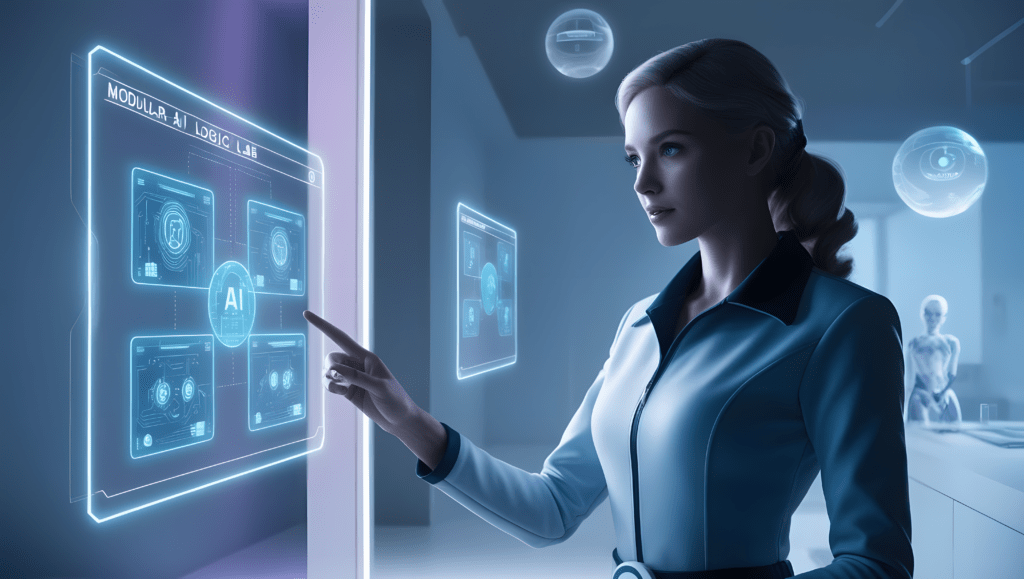
Over the past few days, the AI community has been buzzing again. Not about the usual benchmark wars or token limits — but about something much deeper:
People are starting to cancel their ChatGPT subscriptions.
Not because GPT suddenly got worse. But because other tools, like Claude, are shifting the conversation around what it means to use AI.
And that shift? It’s not just hype. It’s a sign of something bigger: We’re moving from chatbots to cognitive infrastructure.
Read how Anthropic’s Claude is enabling this shift →
Why People Are Actually Moving
Let’s get one thing clear — this isn’t about model quality in isolation. GPT-4 is still strong. Claude is catching up. Gemini is out there. Everyone has strengths.
But what Claude’s new “thinking tool” exposes is a change in how people want to use AI.
Rather than relying on a single, monolithic prompt to generate a full response, Claude users can now chain modular thoughts — a structured way to build reasoning step by step.
It’s basically prompt engineering, abstracted into reusable logic blocks. For people building workflows, content systems, or automation logic, that’s a game changer.
This isn’t about getting a better answer. It’s about building a better process.
From Chat Assistants to Thought Architectures
When ChatGPT first exploded, everyone saw it as a super-charged assistant. A smarter Google. A better autocomplete. You ask, it answers.
But real builders — the ones working on automations, content engines, research workflows, and internal tools — didn’t stop there.
They started asking:
- Can I make this replicable?
- Can I debug the logic?
- Can I version control my prompts?
Claude’s “thinking tool” (and similar directions in AI tooling) answers with a quiet yes.
We’re heading toward cognitive architectures — modular, logic-based workflows that let you:
- Break reasoning into testable chunks
- Reuse logic chains across different problems
- Actually build with AI, not just prompt it
It’s like moving from a calculator to a spreadsheet. Or from a text editor to an IDE.
Why This Matters for Builders
If you’re building with AI in 2025, you’re not just picking the smartest model. You’re picking the one that fits your workflow.
Some questions worth asking:
- Can this tool slot into my existing stack?
- Can I wrap its logic in version-controlled components?
- Can I share a reusable framework with my team?
If the answer is yes, you’re not just dealing with a chatbot. You’re dealing with cognitive infrastructure.
And that’s where things get interesting.
Because once you treat AI like infrastructure, you start designing around it:
- Building internal libraries of prompt modules
- Chaining outputs into other systems
- Using it as a knowledge interface for teams
The frontier isn’t smarter AI — it’s better systems built with AI.
Tool vs Tool? Or Fit for Purpose?
It’s easy to jump on the hype and say, “Claude is better than GPT now!” — but that misses the bigger point.
At Engineered AI, we use ChatGPT extensively — and we’ve built real workflows, strategies, and content systems around it. Why? Because it fits our use case.
Here’s how the tools compare:
| Feature | Claude’s Think Tool | ChatGPT Memory (ours) | ChatGPT Web Search |
|---|---|---|---|
| Core Idea | Modular prompt chains for structured reasoning | Personalized context recall | Real-time info lookup |
| Structured Logic | ✅ Yes — chainable reasoning | ❌ More holistic context, not logic-based | ❌ Single-shot retrieval |
| Reusability | ✅ High — step-by-step modular design | ✅ Limited to context style/prefs | ❌ Not reusable |
| Debuggable? | ✅ Yes — each step isolated | ❌ Not individually testable | ❌ One-shot search only |
| Best Use Case | Research, process logic, multi-step automation | Content design, brand voice, ideation | Data lookup, recent events, external links |
So What’s the Takeaway?
Claude’s “thinking tool” is impressive — especially for structured workflows and modular reasoning.
But that doesn’t mean ChatGPT (or any other tool) is obsolete. It means we’re in a new era of AI usage — one where your needs define your tools.
For us at Engineered AI, ChatGPT remains the core engine. We test others, study their shifts, and evaluate what they offer. But we don’t jump ship for hype.
Because when you’re building something that lasts, you don’t follow the noise. You build with what works — and stay curious about what’s next.
What to Do Right Now (If You’re Not Just Chasing Hype)
Here’s what we recommend at Engineered AI:
- Stop evaluating models in a vacuum. Context matters. Use the tool that complements your workflow, not just the one that sounds the smartest.
- Think in systems, not prompts. Start structuring your reasoning. Can you break a 1,000-word prompt into 3 modular ones? Can each serve a unique function?
- Document what works. Treat prompts and chains like code. If it solves a real problem — log it, version it, reuse it.
- Invest in AI literacy for your team. Don’t just deploy tools — teach your team how to design with them. Modular prompts, system integration, workflow alignment. This is the new literacy.
Final Thought
AI is no longer just a Q&A partner. It’s becoming a thought collaborator — and eventually, part of your company’s mental architecture.
At Engineered AI, we’re not here to chase the next viral tool. We’re here to help you build systems that last.
And that starts with understanding what this shift really means — not just for tech teams, but for how everyone thinks, plans, and scales work with AI.

